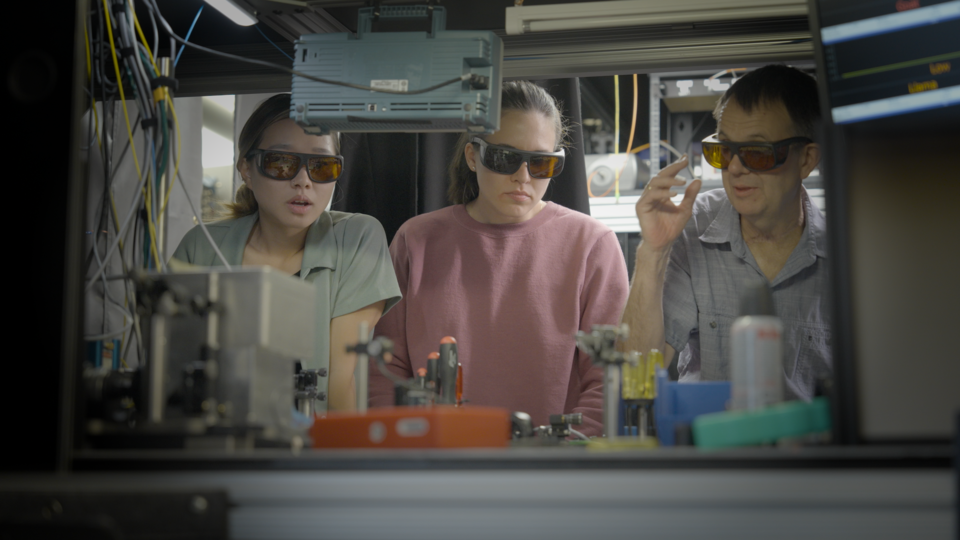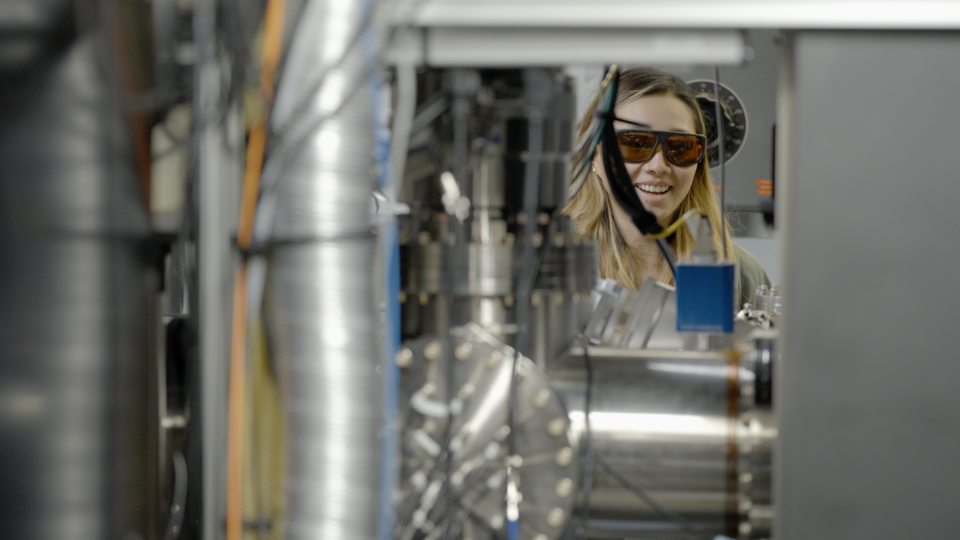Taking Measure
Just a Standard Blog
Everything that exists in the universe came from the Big Bang.
In the aftermath, fundamental particles that make up our world, including protons, neutrons and electrons, were created. These particles are called matter.
At the same time, the universe birthed matter’s antimatter equivalents: antiprotons, antineutrons, antielectrons and similar materials. Think of antimatter as the evil twin of matter.
Here is where a problem comes in. When matter and antimatter meet, they destroy each other and burst into light. If the universe contained exactly the same amount of matter and antimatter, everything would be annihilated. The universe would be nothing but light traveling through empty space.
According to the Standard Model of particle physics, our current understanding of everything we know about the universe (excluding gravity), the Big Bang should have created equal amounts of matter and antimatter.
However, we know that is not true. Galaxies, stars and planets exist. We exist. All the matter we see around us has not been annihilated by its antimatter evil twin.
So, we know there must be more matter in the universe than antimatter. This so-called matter-antimatter asymmetry is one of the greatest mysteries for physicists.
What caused this difference? How did it happen? How did matter win the battle over antimatter so that we’re able to exist?

Physicists have proposed many new theories of physics to explain the matter and antimatter problem. To test these theories, we need precise measurements. We’re looking into this here at NIST and JILA.
We’re getting closer to the answer and, hopefully, clues about new physics.
Electron’s EDM and the Mysteries of Our Universe
One place we can look for clues is in the negative electric charge of an electron. An electron’s electric dipole moment (EDM — not to be confused with dance music) tells us how the negative electric charge is spread between two sides of that electron.
If the EDM is above zero, that means that the electron’s negative charge is not uniformly distributed around the electron.
For example, if we imagine an electron as the Earth, a nonzero electron EDM would imply that the electron’s north pole has slightly more (or less) charge than its south pole.
According to a fundamental theorem of physics, this charge difference between the poles in the electron is deeply connected to the matter-antimatter asymmetry. So far, this difference between the two poles has not been detected by researchers.
In fact, according to the Standard Model, the electron’s EDM should be nonzero but very small — too small for us to be able to measure with current technology.
However, the new physics models predict much larger values for the electron’s EDM, some of which could be within reach of current experimental efforts. By measuring the electron’s EDM, we are testing these new physics models.
If we measure a nonzero electron EDM (or something larger than what the Standard Model predicts), we could be closer to solving the mystery.
Ultimately, this could lead to a better understanding of our universe.
Breakthroughs in Electron’s EDM Measurement
Our research group has been working on experiments to measure the electron’s EDM for many years. We probe the electrons inside molecules to measure the EDM.
This may sound simple, but measuring the EDM of the electron is incredibly challenging.

First, the electron’s EDM is very small (if it exists at all). So, we need to make sure that our experiment has the highest sensitivity possible.
Second, many factors can affect the experiment and give us a false EDM signal. So, we spend a lot of time predicting and mitigating the effects of these false signals.
Despite these challenges, our group recently published the most precise measurement of the EDM. Our measurement told us that the electron’s EDM was zero or smaller than what our experiment can currently detect.
While a nonzero measurement of the electron’s EDM would have been very exciting, our results helped us learn more about which of these new physics models we should be focusing on. The more we can narrow down the candidates of models, the closer we get to the answers we’ve been looking for.
Therefore, just like the several other groups around the world trying measure the electron’s EDM, we at JILA are constantly building on our previous work to make more precise measurements of the EDM. Currently, we are developing the next generation of the experiment. This includes several improvements, such as using a different molecule with a higher sensitivity to the EDM and the ability to run multiple experiments at the same time.
There is a chance that a nonzero electron EDM will never be measured, in which case physicists will have to look elsewhere to find clues for new physics. Whether or not it is in the electron’s EDM, we know that there are clues somewhere because our current understanding of the universe is not complete.
Being an Early Universe Detective
I have been working on JILA’s new EDM apparatus since I entered the Ph.D. program at the University of Colorado Boulder to study atomic, molecular and optical (AMO) physics.
I first fell in love with AMO physics back in my undergraduate education, where I worked in a research lab searching for a mysterious part of our universe that we can’t see, known as dark matter.
I was fascinated by the fact that we, a couple of undergraduate students and a professor, could build an apparatus to look for an answer about the universe.

While answering these fundamental questions about the universe doesn’t seem to have an immediate application, unexpected applications sometimes arise in the future.
For example, Einstein’s theory of general relativity was developed decades before it was applied in GPS to accurately calculate a user’s location. Einstein certainly did not develop general relativity to give directions to the nearest ice cream shop, but many people use that technology every day!
Even if there aren’t any applications, I think that answering fundamental questions is valuable to nourish human beings’ natural curiosity.
For my graduate work, I wanted to continue tabletop experiments that probe fundamental physics. The search for the electron’s EDM was a great opportunity to do that. However, the experiment is complicated. This project, being a tabletop experiment with only a few researchers, requires skills from many different disciplines.
Since I started, I have learned so much not only about physics but also about lasers, electronics, machining and more. I really enjoy this aspect of an AMO lab.
I have also learned a tremendous amount from my adviser, Eric Cornell. He always finds a way to explain physics very intuitively, which is not something you can find in textbooks or even in many classroom settings. This intuitive thinking has helped me find the right questions to ask when something unexpected arises and has sent me down the right path to understand it.
I am planning to complete my Ph.D. in the next year or two. I have not decided if I want to stay in academia or go into industry. But I do want to continue doing exciting research, so I am excited to see what path my career takes.
Wherever my research takes me, the mysteries of the early universe and fundamental physics will continue to inspire me and other scientists to answer exciting new questions.
JILA, a partnership between NIST and the University of Colorado Boulder, is one of the nation’s leading research institutes in the physical sciences.






How do we know that there is more matter than antimatter in the universe? Maybe there just hasn't been enough time for the universe to reach equilibrium. There could be entire galaxies made of antimatter. We can't know for sure. With the universe expanding, we may never know because the two forms of matter will not have the opportunity to interact. Perhaps the whole premise of asymmetry is incorrect!